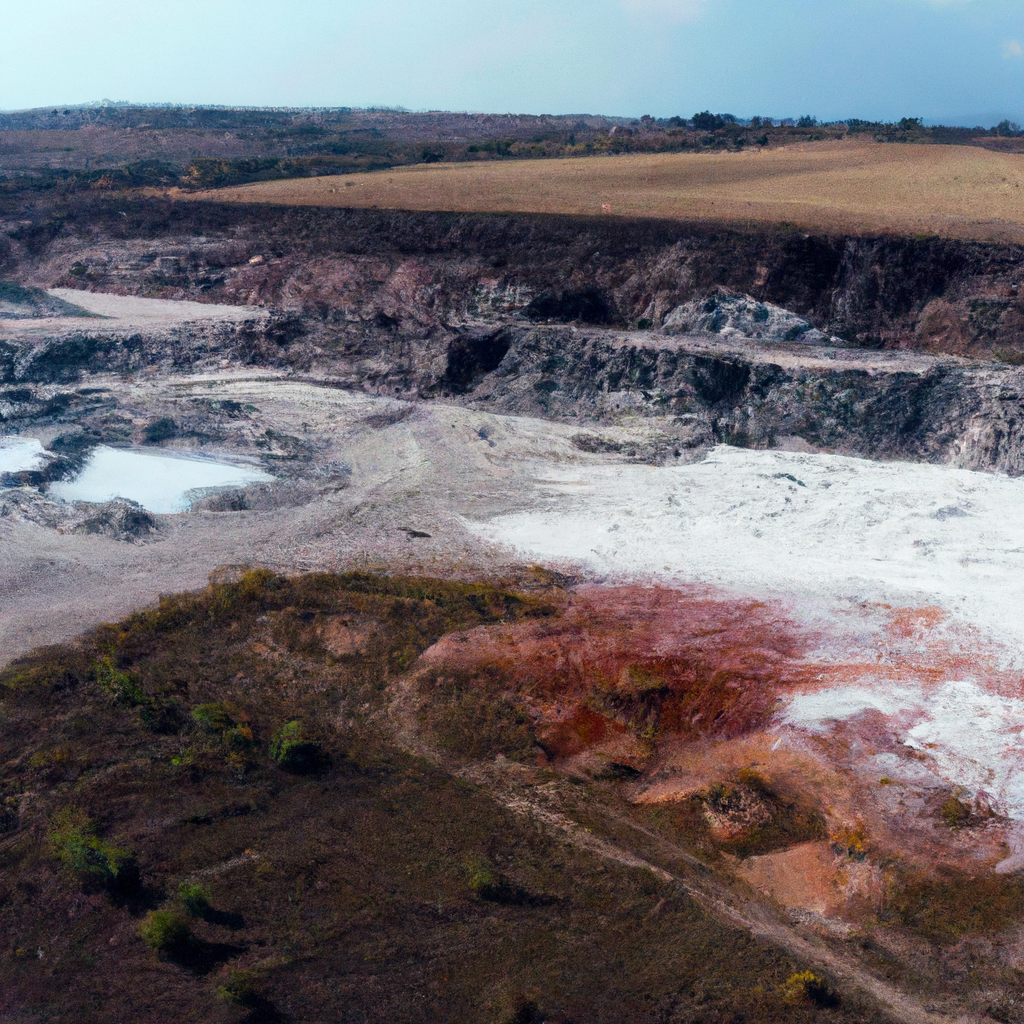Lithium is one of the most critical elements used in the production of batteries that power electric vehicles and store renewable energy. With the increasing demand for electric cars and sustainable energy storage, the demand for lithium has also risen significantly. While lithium mining has helped reduce carbon emissions, it has also raised concerns about its environmental impacts. In this article, we will explore the environmental impacts of lithium mining, its sustainability, and the mining industry’s carbon footprint.
Environmental Impacts of Lithium Mining
Lithium mining involves extracting lithium-rich brines or ores from underground or open-pit mines. The process of lithium extraction has significant environmental impacts. Here are some of the environmental impacts of lithium mining:
1. Water Scarcity: Lithium mining requires large amounts of water, which can cause water scarcity in already water-stressed regions. The extraction process involves pumping brines from underground aquifers, which can deplete groundwater reserves. Mining operations can also pollute nearby water sources with chemicals used in the process.
2. Land Use: Lithium mining requires large tracts of land, which can disrupt ecosystems and wildlife habitats. Open-pit mining can cause soil erosion, deforestation, and desertification. In addition, lithium mining can release toxic chemicals into the soil and air, contaminating nearby vegetation and wildlife.
3. Greenhouse Gas Emissions: The process of lithium mining requires significant energy inputs, which can result in greenhouse gas emissions. Mining equipment, transportation, and processing all contribute to the carbon footprint of lithium mining. In addition, the chemicals used in the process can release greenhouse gases, such as methane and carbon dioxide.
4. Waste Generation: The process of lithium extraction generates significant amounts of waste, including tailings, which can contain toxic chemicals. The waste can also pollute nearby water sources and contaminate soil.
Sustainability of Lithium Mining
The sustainability of lithium mining depends on several factors, including the environmental impacts, social and economic impacts, and the availability of lithium reserves. Here are some considerations for the sustainability of lithium mining:
1. Environmental Impacts: Lithium mining can have significant environmental impacts, as discussed above. To ensure the sustainability of lithium mining, companies must implement sustainable mining practices, such as minimizing water use, reducing waste generation, and mitigating greenhouse gas emissions.
2. Social and Economic Impacts: Lithium mining can have social and economic impacts on local communities. Companies must engage with local communities and stakeholders to ensure that their rights and interests are respected. In addition, companies must ensure that the economic benefits of lithium mining are shared fairly and transparently.
3. Availability of Lithium Reserves: The sustainability of lithium mining also depends on the availability of lithium reserves. As demand for lithium continues to rise, it is essential to ensure that lithium reserves are sustainably managed and that new reserves are discovered and developed.
Carbon Footprint of the Mining Industry
The mining industry has a significant carbon footprint, which includes greenhouse gas emissions from mining equipment, transportation, and processing. Here are some ways to reduce the carbon footprint of the mining industry:
1. Renewable Energy: The mining industry can reduce its carbon footprint by transitioning to renewable energy sources, such as solar and wind power. By powering mining operations with renewable energy, the industry can reduce its reliance on fossil fuels and significantly reduce its greenhouse gas emissions.
2. Energy Efficiency: The mining industry can also reduce its carbon footprint by improving energy efficiency. By using energy-efficient equipment and processes, the industry can reduce its energy consumption and greenhouse gas emissions.
3. Carbon Offsets: The mining industry can offset its greenhouse gas emissions by investing in carbon offset projects. By investing in projects that reduce greenhouse gas emissions, such as reforestation and renewable energy projects, the mining industry can reduce its net carbon emissions.
Conclusion
Lithium mining has significant environmental impacts, including water scarcity, land use, greenhouse gas emissions, and waste generation. To ensure the sustainability of lithium mining, companies must implement sustainable mining practices, engage with local communities, and ensure that lithium reserves are sustainably managed. Moreover, the mining industry can reduce its carbon footprint by transitioning to renewable energy, improving energy efficiency, and investing in carbon offset projects. By addressing the environmental impacts of lithium mining and reducing the mining industry’s carbon footprint, we can ensure that the production of renewable energy and electric vehicles is truly sustainable.







